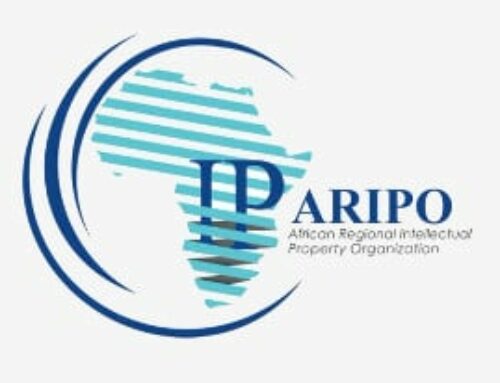The 26th of April of each year has been earmarked as World Intellectual Property (IP) Day. The event was established in 2000 by the World Intellectual Property Organization (WIPO), one of the 15 specialized organs of the United Nations. The day coincides with the date on which the Convention establishing WIPO was adopted in 1970.
World IP day is commemorated by the Intellectual Property fraternity which includes intellectual property attorneys, agents, Intellectual Property Offices, inventors, businesses, artists and creatives. According to the Memorandum of the Director General from the 12th Extraordinary WIPO General Assembly of October 2003, the objective of the day is to “highlight the role and contribution of intellectual property in the economic, cultural and social development of all countries as well as to raise public awareness and understanding in this field of human endeavour.”
The theme for this year is IP & SMEs: taking your ideas to the market. This year’s event aims to highlight the role that Small and Medium Enterprises (SMEs) play in economic, social and cultural development of countries. It further seeks to raise awareness on the various vehicles that SMEs have at their disposal to exploit their intellectual property, in order to spur on business development and innovation. If effectively exploited, intellectual property rights (“IPRs”) can form the intellectual capital and asset base of a business.
a) Background to SMEs
According to the World Bank, SMEs represent 90% of businesses worldwide and contribute to 50% of employment globally. They are the backbone of global economies and when guided adequately, they can further contribute to the fiscus by commercializing their IPRs.
In Zimbabwe, SMEs are classified per sector according to a predetermined formula (A + B + C), which is set out in The Small and Medium Enterprises Act [Chapter 24:12] (the SMEs Act). The factors “A”, “B” and “C” respectively represent the maximum number of full time paid employees during the calendar year of an enterprise, the maximum annual turnover of an enterprise and maximum gross value of assets, excluding immovable property. Section 5 of the Fifth Schedule of the SMEs Act assigns points to each factor, and any entity with 10 or more points is disqualified from being classed as an SME.
b) What are the various intellectual property rights recognized in Zimbabwe and how can they be monetized?
i. Trade marks
According to Section (2) 1 of the Trade Marks Act [Chapter 26:04] (“the Trade Marks Act), a trade mark is a mark used in relation to goods and services by a person or company for the purpose of distinguishing the goods and services of a particular source, from those of another. A trade mark can consist of a company name, recognizable brand name, logo, sign, words or letters and expressions.
Protection is afforded to both registered and unregistered trade marks based on the general principle that no party is entitled to represent its goods or services as being those of another thereby causing injury to that party. The owner of an unregistered trade mark, however, bears an onerous burden of proving its ownership of a mark, which is why it is better to register a trade mark.
In broad terms, trade marks can be monetized by personal use or exploitation in the course of manufacturing and trading activities, licensing to third parties, through franchising agreements where an entity is entitled to operate under a registered mark , merchandise agreements where owners of a mark permit another entity to manufacture and distribute their merchandise for an agreed fee, and assignment agreements where ownership in a trade mark is transferred to another party for an agreed fee.
ii. Trade secrets
A trade secret is any confidential information, process or practice that is not known outside of a business and provides a competitive edge. According to WIPO, in order to qualify as a trade secret, the information must be commercially valuable, known to a limited group of persons and must be subject to reasonable steps taken by the trade secret holder to keep it secret, including the use of confidentiality agreements for business partners and employees.
Trade secrets are non-registered rights. As a result, a trade secret owner cannot prevent others from using the same commercial information if it has been acquired through independent research and development or reverse engineering. Companies therefore work to keep trade secrets secure. For example, The Coca – Cola Company, Coca – Cola beverage formula has been kept secret since 1886. According to the company’s website, the formula is kept in a vault to ensure that it is not disclosed.
Trade secrets may be either sold or licensed in order to create revenue for a business.
iii. Patents
A patent is a legal instrument which grants the proprietor of an invention the exclusive right to control the use of the invention within a specific territory for a defined period (which is 20 years, in Zimbabwe).
Apart from exploitation in the course of manufacturing and trading activities other avenues are available for inventors to commercialize their inventions. Under patent licensing, a third party is entitled to make, use and sell an invention either exclusively or non-exclusively. Under an assignment agreement, the patent holder may elect to assign or sell the patent to a third party (generally used where the inventor lacks the resources to commercialize the patent and introduce it to the market).
iv. Industrial designs
An industrial design relates to the aesthetic features of an article, for example, the shape, configuration, pattern or ornamentation applied to an article by an industrial process (e.g. the Apple I-pad design). The initial registration period for an industrial design in Zimbabwe is 10 years which is renewable for a single period of 5 years.
An industrial design, much like a patent, can also be monetized through licensing and assignment of the design.
v. Copyright
Copyright is a legal right which subsists in an original work which is recognized by law as eligible for copyright protection. Works which are eligible for protection include literary works, musical works, sound recordings, broadcasts, programme carrying signals and published editions. Unlike patents and trade marks, in Zimbabwe copyright is a non-registered right that arises automatically by operation of the law once the requirements for eligibility of a work are met.
The owner of copyright can obtain financial benefit from their work by personal exploitation of the same in the course of trade and business, or through the licensing and assigning of their rights to a third party.
vi. Plant Breeders Rights
The Plant Breeders Rights Act [Chapter 18:16] provides for the registration and protection of rights in respect of certain varieties of plants. Plant breeders’ rights provide protection for new varieties of plants to the rights holders, which grants them the exclusive benefit of monetizing their plant varieties as well as entering into licensing agreements with third parties.
c) The cost associated with obtaining and maintaining IPRs
It is imperative that businesses not only budget for the research and development of IPRs, but also for the cost of registration, market authorization, maintenance and enforcement fees.
Businesses must weigh the costs of maintaining their IPRs against the revenue generated from commercialization of the same. Businesses are also encouraged to create records for any IPRs that may be subject to maintenance in order that their rights are not extinguished due to non-payment of maintenance fees.
Conclusion
It is important for SMEs to harness the intellectual property that forms part of the business asset base in order to generate alternative sources of revenue. The leveraging of IPR can increase profits and assist in the overall growth and productivity of a business.
Harare, 26 April 2021
J. Kwaramba
Associate
Intellectual Property Department
All rights reserved

